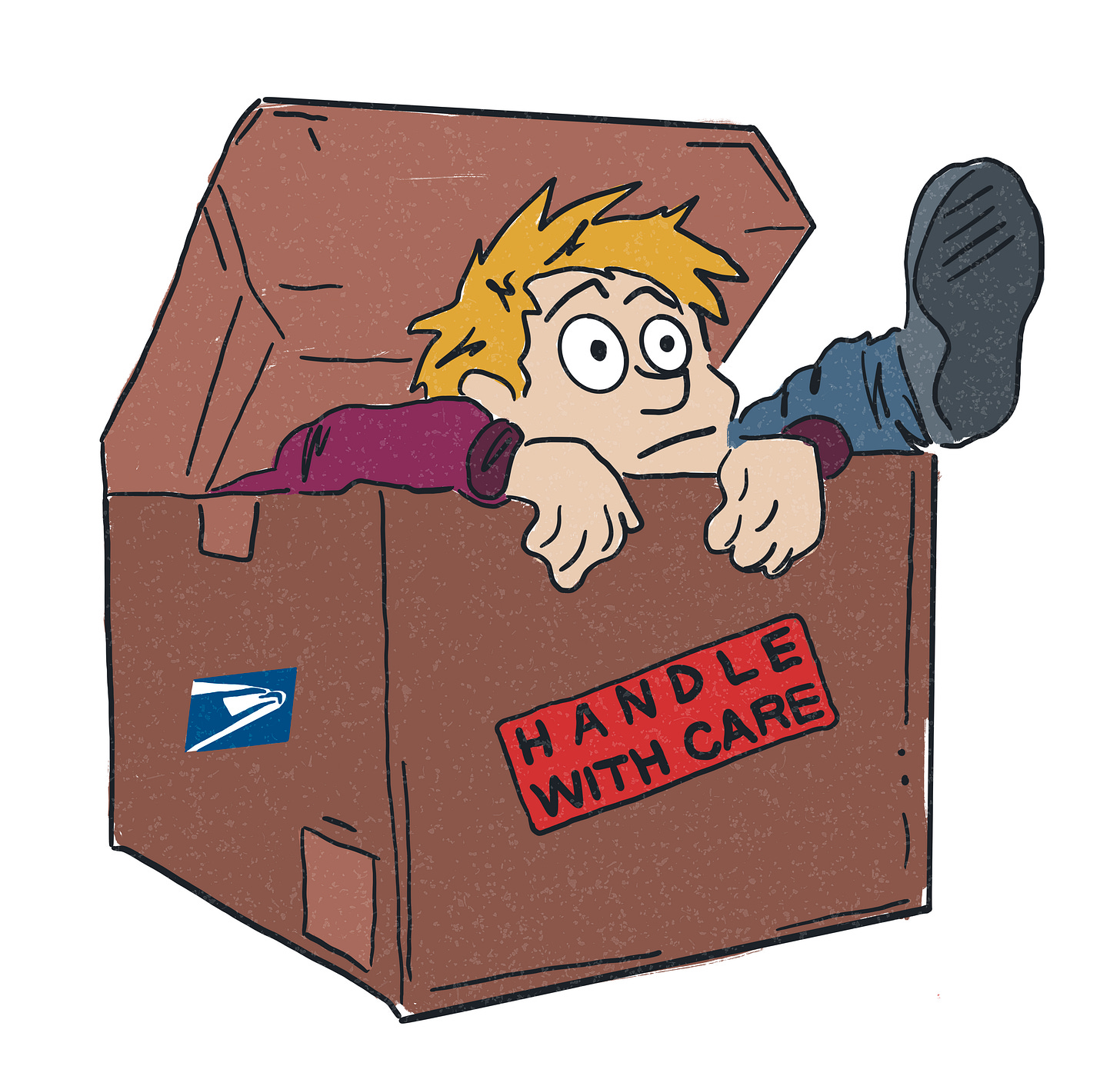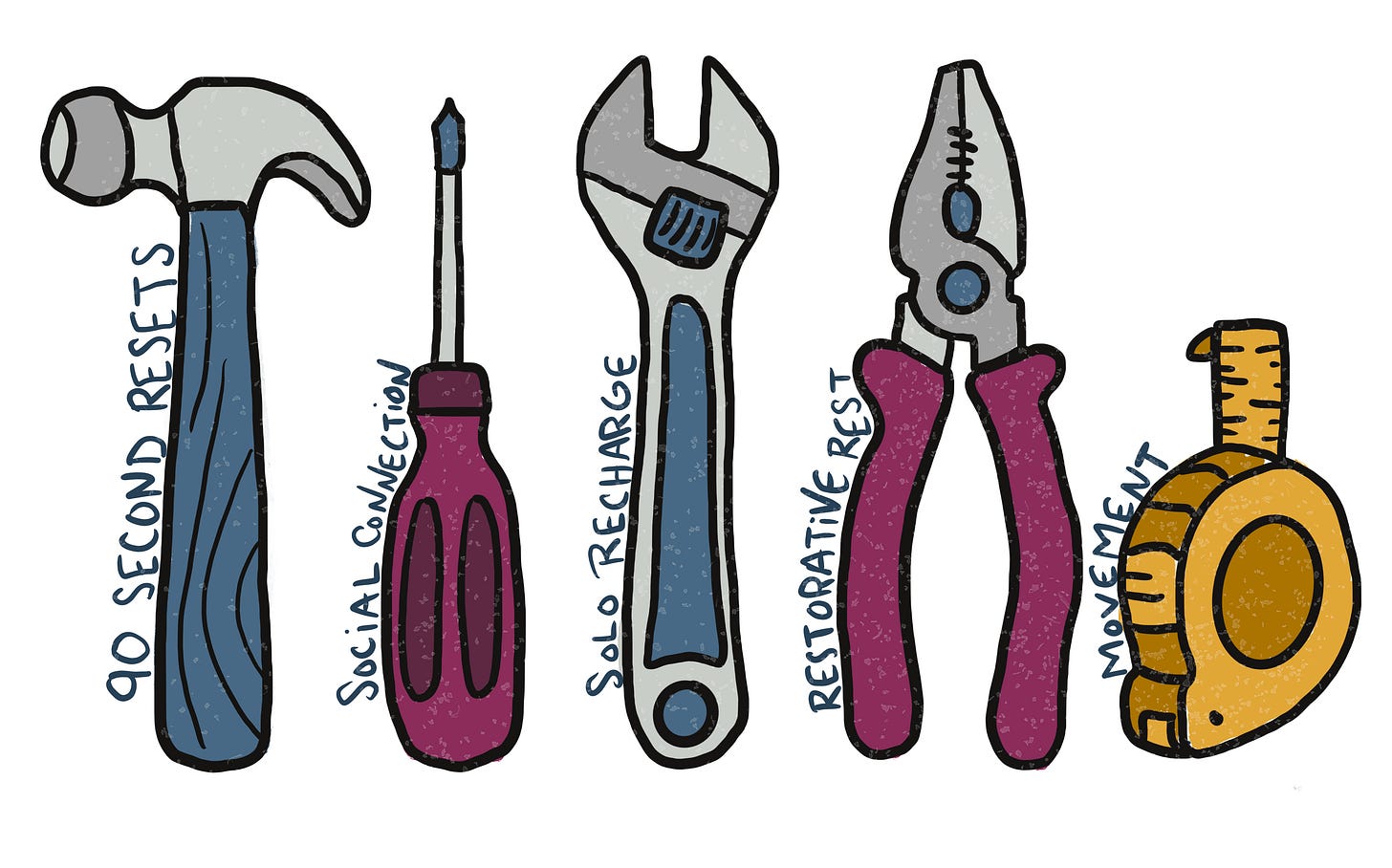Last week I went to the funeral of my beloved Great Uncle: Uncle Danny. Grandpa Dan. Mr. Kunitz. Daniel Kunitz was an educator for over fifty years and one of those rare people for whom Facebook was a blessing. Again and again, former students reconnected to tell him how profoundly he had shaped their lives. He lived a long and beautiful life, and it still doesn’t feel long enough.
As I stood among a group of tired, teary faces—each of us trying to celebrate Danny’s life while imagining ours without him—one of my cousins mentioned that her daughter was having a hard time. At seven years old, and due to logistical hurdles far beyond her interest or comprehension, she hadn’t been able to attend the funeral or shiva. Not only was Great Grandpa Dan gone, but her mom had also been away for nearly a week.
“But her school does something incredible,” my cousin explained. “If your kid is having a tough morning, you send an email with the subject line ‘Handle with Care’ and the teachers know to give them extra time and attention. No questions asked, no explanation needed.”
What an absolute gift to give another human being: to be handled with care, no questions asked.
It goes without saying, most adults aren’t given this luxury. If we’re lucky, a partner or a coworker might gift us with more space or grace or love during a difficult time. If we’re very lucky, we might be able to be honest with our students or administrators that things are hard right now, and we need the benefit of the doubt that we’re doing our best.
But what about those days that feel terrible and overwhelming with no clear cause? That baffling alchemy when you wake up and everything feels hard for no reason at all—other than the simple fact that it is sometimes (often) difficult to be human?
Handle with care. No questions asked. If only adults could send up a flare on those inexplicably hard days.
The reality is, sometimes we are made of metal, and sometimes we are made of glass. Sometimes we can be rattled to the ends of the earth and stay whole, and sometimes—even without direct tragedy or trauma—we feel like we’ll crack in the rain. Sometimes the school year is insanely chaotic, piled with organizational pressures far beyond our control. And sometimes it’s only mostly chaotic, and yet it still feels insurmountable.
But as Lucy wrote last week, the heart of a connected classroom is an educator’s connection to themselves. And when we’re feeling tender, the “why” doesn’t really matter.
What does matter is how we show up for ourselves. We might not have an official Handle with Care protocol for grown-ups, but we can learn to handle ourselves with care. In other words, we can practice self-care intentionally, especially on the days we’re feeling dysregulated, disconnected, and overwhelmed by it all.
Unlocking Our Educator Self-Care Toolkit
At this point in our social evolution, most of us already have a set of self-care strategies to use when we feel dysregulated. Some people turn to running – others to puzzles. Some people want to talk to their mom, and others would never call their mom if they wanted to feel better. While everyone’s self-care toolkit will look different, the result is the same: a reconnection to self, whether physical, mental, emotional, or spiritual.
The problem is figuring out which tool to use and when. Let’s face it: it’s easier to doom-scroll than do just about anything else. It’s especially easy to doom-scroll if you’re an exhausted educator, parent, or caregiver and only have 90 seconds to yourself in the bathroom. More to the point, understanding how to handle ourselves with care is a skill, not a birthright—and one that we are only beginning to learn.
So let’s simplify it.
Although everyone’s self-care triage kit will be different, each activity or approach can be grouped into five basic categories: 90-second resets, social connection, solo recharge, restorative rest, and movement. And much like a doctor evaluating a patient before treatment, we can ask ourselves four questions to determine which of our strategies can best help us reset and reconnect – even if we’re in the classroom.
Self-Care Triage Questionnaire
Imagine this: It’s the middle of the day. You’re at school, hunkered in your classroom. Your first class made you want to crawl under the table and cry, but the second was fine. Not terrible, but also not great. You’re feeling off—tired and low and generally disheartened.
In order to figure out which of your self-care tools might help get yourself back on track, you ask these three questions:
QUESTION 1: Do I have less than 90 seconds to reset?
The reality is, it can feel impossible to find the time, space, and resources for self-care, especially for educators. But that is a challenge and not an excuse. We have more control over our time and actions than we think. Studies show that it takes only 90 seconds to allow the physiological effects of emotion to pass through our bodies. A hug from your work bestie immediately releases oxytocin while reducing stress hormones like cortisol. If you only have 90 seconds, you still have options.
90-Second Resets: Box breathing exercise, long inhales and longer exhales, stomping your feet and shaking your hands, a hug, a very brief bathroom wail
QUESTION 2: Do I need to be with people, or do I need to be alone?
Regardless of where you sit on the introversion and extroversion scale, one set of your self-care activities will involve connecting with other humans, and another will let you restore alone. I sit shockingly high on the introversion continuum, and yet there are (many) times when the fastest route back to myself is by connecting with another person. Knowing when to go to the breakroom and when to barricade yourself in the classroom can be a game-changer.
Solo Recharge: Breathing exercise, free write while the kids are at lunch, taking a quick walk outside by yourself, doodling or drawing
Social Connection: Talking to other teachers in the breakroom, texting or calling a friend, grading in a group, walk outside with a work bestie
QUESTION 3: Do I need to rest, or do I need to move?
Both rest and movement have the same effect: a reconnection to the body. If you’re too tired to figure out what would help, closing your eyes for five minutes during prep might be just what you need. If your head is swimming with thoughts and fears and to-do lists, moving your body might help you shake them loose. Some activities help you rest and some help you move, but the result is the same: a reconnection to the body and self.
Restorative Rest: Breathing exercises, sitting (!) and feeling the ground, body scan, slow walk down the hall, doodling, drawing, quick meditation, gentle stretching
Movement: Walk outside alone, walk outside with a friend, pace the hallways, jumping jacks or push-ups, somatic release by shaking your hands
Regardless of your preferred tools and strategies, the fact is that self-care is a skill, not a luxury or indulgence. And like any skill, it takes practice. The more we practice taking care of ourselves (asking these questions, listening to our needs, and responding kindly), the better we get at it. We learn what works for us and what doesn’t. It’s not easy, but the heart of a connected classroom rests on a teacher’s connection to themselves, and the heart of connection is re-connection.
When I think about what made all those former students write Mr. Kunitz years after they graduated, it was because he did the work. Even as a young man, he took a nap every day. He loved reading and fishing and playing basketball with his grandkids. He wasn’t afraid of learning or discomfort. Daniel Kunitz took the time to reconnect with himself again and again, and in doing so, he laid the foundation for a more connected world around him. He was a brave man and a good man, and he taught us all one last lesson: to live a great life, you must live a connected life—and that journey begins by handling yourself with care.












I appreciate the questionnaire approach to which kind of self-care might work the best. All too often self-care is talked about in an ambiguous way and feels pie in the skyish. I wish I had, had these tools back in my high school days of teaching! The message those years was anti-handle with care. It was more along the lines of suck it up and deal, especially when you are struggling.